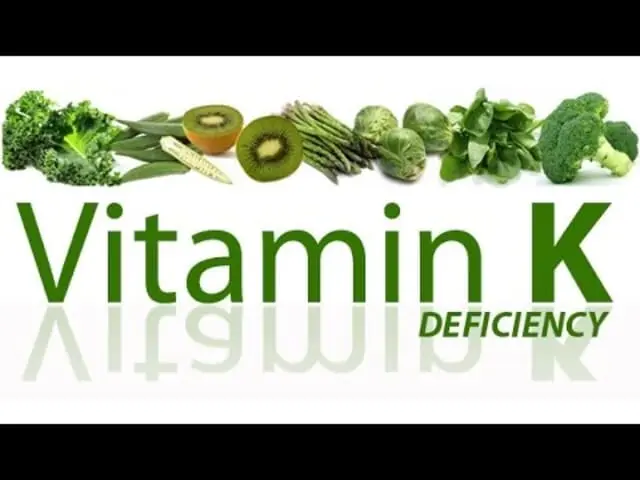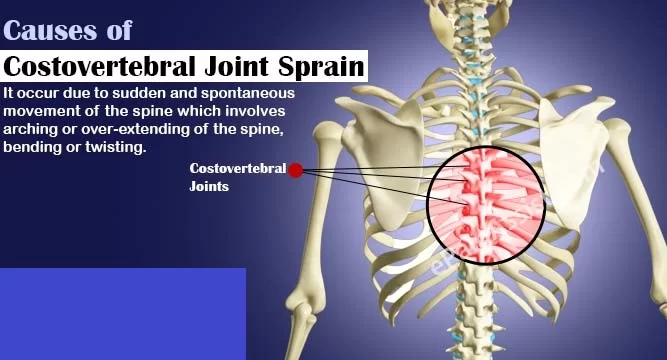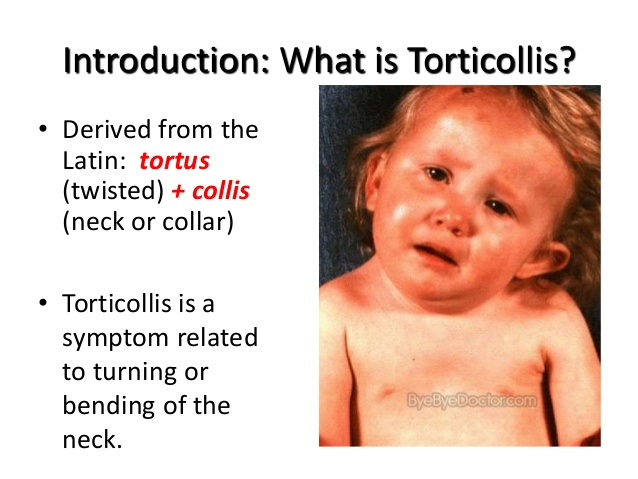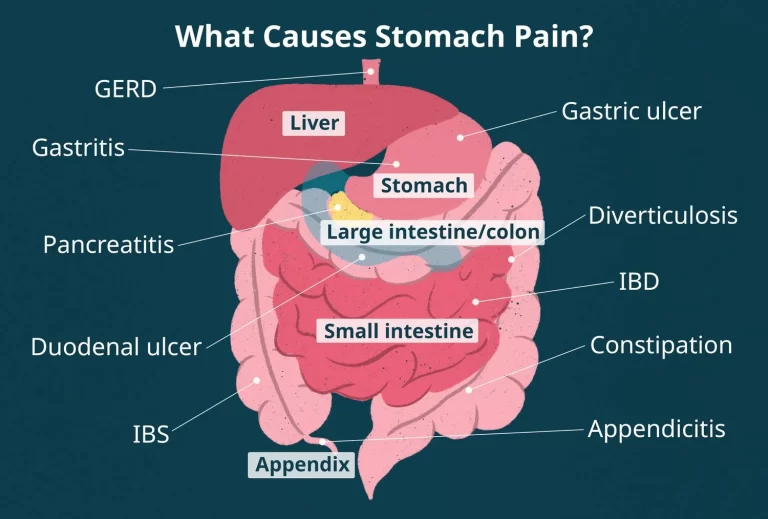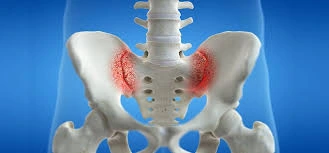Vitamin K Deficiency
Introduction
One often-ignored illness that has a substantial influence on health across several physiological domains is vitamin K insufficiency. Vitamin K is a class of fat-soluble chemicals that plays a vital role in bone metabolism, blood clotting, and cardiovascular health.
A lack of Vitamin K in the human body can lead to a variety of issues, such as hemorrhage, poor bone growth, and increased cardiovascular risks. Healthcare practitioners must comprehend the complex interactions between vitamin K and these essential physiological processes.
Newborn vitamin K insufficiency is a unique and serious issue in the field of pediatric medicine. Vitamin K deficiency bleeding, or VKDB is a potentially fatal bleeding disease that can occur in newborns with low vitamin K stores if prompt management is not provided.
Vitamin K-dependent clotting factor deficit that is hereditary (VKCFD) is a rare congenital bleeding condition that can appear in newborns.
This exercise goes over the causes, symptoms, methods of diagnosis, and practical ways to treat vitamin K insufficiency. This exercise also emphasizes how crucial an interdisciplinary healthcare team is to providing patients with all-encompassing treatment.
Numerous critical functions, including blood clotting, bone metabolism, and cardiovascular health, are mediated by proteins that are dependent on vitamin K. Significant bleeding, poor bone formation, osteoporosis, and an increased risk of cardiovascular disease can all be caused by a vitamin K shortage.
Objectives:
- Distinguish between VKDB and VKCFD, two types of vitamin K insufficiency that affect both adults and neonates.
- Determine the level of vitamin K shortage and its severity by utilizing suitable markers, such as PIVKA-II, to assess vitamin K status.
- Adhere to evidence-based recommendations and procedures for the prompt provision of vitamin K deficiency prevention, diagnosis, and treatment.
- Work together as a multidisciplinary healthcare team to offer patients with vitamin K insufficiency all-encompassing care.
Vitamin K is composed of a class of fat-soluble substances. Numerous critical functions, including blood clotting, bone metabolism, and cardiovascular health, are mediated by proteins that are dependent on vitamin K.
Significant bleeding, poor bone formation, osteoporosis, and an increased risk of cardiovascular disease can all be caused by a vitamin K shortage. The National Academy of Science Food and Nutrition Board states that males should consume 120 µg/d and women should consume 90 µg/d of the recommended diet.
Based on when symptoms first appear, vitamin K deficiency bleeding (VKDB) in neonates is divided into three categories. Within a day after birth, early VKDB appears; classic VKDB appears within the first week; and late VKDB appears between one week and six months of life, peaking between two and eight weeks.
Uncommon congenital bleeding illness known as hereditary combined deficiency of vitamin K–dependent clotting factors (VKCFD) can also show symptoms in the newborn stage.
Causes of Vitamin K Deficiency
A lack of vitamin K can be caused by a number of things, but one of the main ones is usually a diet low in foods high in vitamin K, such as leafy greens and fermented foods.
Vitamin K absorption can be hindered by some medical illnesses that impact fat absorption, such as inflammatory bowel diseases or celiac disease. Furthermore, the gut bacteria that produce vitamin K might be upset by extended antibiotic treatment.
Blood thinners and other medications that disrupt the metabolism of vitamin K can potentially exacerbate the insufficiency. It is crucial to comprehend these several underlying causes in order to properly prevent and treat vitamin K insufficiency.
There are other causes of VKDB, including pharmaceutical use by the mother during pregnancy, low vitamin K levels at birth, and exclusive nursing.
Conversely, VKCFD is an uncommon or rare autosomal recessive illness that results in decreased amounts of proteins C, S, and Z as well as coagulation factors II, VII, IX, and X.
Epidemiology
While 8% to 31% of generally healthy persons may frequently exhibit vitamin K insufficiency, bleeding that is clinically serious is seldom the result.
Those who have liver illness, malabsorption syndromes, or are taking drugs that affect vitamin K metabolism are more likely to experience bleeding or hemorrhage. Every newborn has reduced vitamin K levels.
The first accounts of classic VKDB describe a bleeding condition that manifests on the second or third day of life and dates back to 1894.
When sepsis-related bleeding was included, the frequency increased to 600 cases per 100,000 newborns, translating into a 62% mortality rate. Mothers who were taken anticonvulsants or other drugs that interfere with vitamin K have been associated with early VKDB.
Without preventive neonatal vitamin K, the risk of early VKDB can reach 12%. Without taking supplements of vitamin K, the present estimated incidence of classic VKDB is between 0.25% and 1.7%.
Asian people have the highest frequency of late VKDB, which affects 4.4 to 72 newborns per 100,000 births. newborns who are exclusively breastfed are at a higher risk of developing the condition.
For late-onset VKDB, the death rate varies from 20% to 50%. Furthermore, cerebral bleeding contributes significantly to the neurological morbidity rate in late VKDB. Less than 30 instances of VKCFD, a rare autosomal recessive illness that affects both genders equally, have been recorded globally.
Pathophysiology
As a fat-soluble derivative, vitamin K is a member of the 2-methyl-1,4-naphthoquinones group. The molecule has a variable alkyl substituent at position three. Three different types of vitamin K exist overall.
K1 (phylloquinone) and K2 (menaquinone) are the two main forms; K3 (menadione), the third synthetic form, is no longer in use. Due to the possibility of toxicity in newborns with glucose-6-phosphate dehydrogenase deficiency, vitamin K3 has been substituted by a synthetic version of vitamin K1.
Cruciferous vegetables and leafy greens are rich in vitamin K1. Fermented dietary sources and gut flora’s manufacture of the vitamin are the main sources of K2. The body distributes vitamins K1 and K2 differently, therefore they may have differing effects on enzyme function.
Dietary vitamin K1 is absorbed in the ileum and jejunum, is carried into the bloodstream by chylomicrons, and is efficiently absorbed when it is combined with bile, pancreatic enzymes, and dietary fat.
The creation of prothrombin and coagulation factors II, VII, IX, and X depends on vitamin K. These substances alter gamma-carboxyglutamic acid on clotting factors II, VII, IX, and X by acting as cofactors for the gamma-glutamyl carboxylase and the vitamin K 2,3-epoxide reductase complex.
Cofactors must undergo this alteration in order to bind to the phospholipids in the platelet membrane. Reduction in protein activity and increased bleeding are caused by under-carboxylated clotting factors.
In addition, matrix GLA proteins, osteocalcin, and the anticoagulants C, S, and Z require vitamin K to be activated. Under-carboxylated osteocalcin is frequently present in people with decreased bone mineral density, which raises the risk of fracture in elderly individuals.
Increased arterial calcification is the outcome of decreased levels of certain vitamin K subtypes. Because vitamin K does not pass the placenta well, babies are born with low to undetectable vitamin K concentrations and elevated protein due to vitamin K antagonist-II (PIVKA-II).
PIVKA is a type of prothrombin that has either been partially or fully carboxylated. Mutations in either the vitamin K 2,3-epoxide reductase type 2 complex or the gamma-glutamyl carboxylase type 1 complex cause VKCFD.
A rare autosomal recessive condition. Under-carboxylation and decreased vitamin K-dependent protein activity result from these mutations.
History and Physical
A lack of vitamin K can cause bleeding at the sites of venipunctures or following mild trauma. Antibiotics, anticonvulsants, warfarin, and other prescription drugs that disrupt the metabolism of vitamin K may also be given by patients.
Physical examination frequently finds petechiae or ecchymoses. Neonates in the VKDB have ecchymoses and bleeding symptoms. All forms of VKDB are linked to parents who have chosen not to give their babies the advised vitamin K prophylaxis.
Severe bleeding usually occurs in the cerebral, intrathoracic, or intraabdominal regions in infants with early VKDB. Vitamin K metabolism-inhibiting medicines for mothers are linked to early VKDB.
Classic VKDB normally develops following circumcision or with less acute bleeding from the gastrointestinal system or umbilicus.
Due to the decreased vitamin K level in breast milk compared to formula milk, late VKDB is more common in exclusively breastfed newborns and often presents as severe cerebral bleeding.
Any bleeding or bruises that don’t seem to be related should always be investigated further with laboratory tests. While fewer cases of VKCFD may show signs later in life, severe cases typically appear in the neonatal period with symptoms like those of VKDB.
Hemorrhage, which may be unrelated to surgery or occur spontaneously, is a common presentation. Developmental and skeletal abnormalities, mucosal bleeding, and easy bruising are frequently present in the past.
Evaluation
The classic manifestation of vitamin K insufficiency in adults is an elongated prothrombin time (PT) that responds favorably to vitamin K administration. Because of its impact on plasma prothrombin levels, PT functions as a marker of vitamin K status.
Interestingly, prothrombin levels usually need to drop by around 50% before prothrombin levels become abnormal, and PT is an indiscriminate indication. Des-gamma-carboxy prothrombin (DCP), another name for PIVKA-II, is produced when there is no vitamin K present.
This deficient marker is more sensitive. There is little variation in PIVKA-II or DCP levels according to age and other variables that affect vitamin K plasma and serum concentrations.
People with a daily vitamin K intake of less than 60 mcg have elevated PIVKA-II levels. 10% to 50% of babies have high PIVKA-II levels at birth, and by day 4 or 5, 70% of healthy, non-supplemented infants had elevated PIVKA-II levels.
The findings of direct measurements of vitamin K plasma levels are very varied and are influenced by dietary fat content, nutritional and metabolic variables, and analytical techniques.
While measuring the concentration levels and subtypes of vitamin K in patients is important, liquid chromatography–tandem mass spectrometry technology might not be widely available.
A PT of at least four times the usual range and the existence of one of the following conditions make up the diagnostic criteria for VKDB:
- With normal fibrinogen and no breakdown products, a normal or elevated platelet count is present.
- Within half an hour following intravenous (IV) vitamin K administration, PT was back within the usual range.
- Increased PIVKA-II or DCP levels.
A research laboratory can confirm the diagnosis of vitamin K 2,3-epoxide reductase complex and gamma-glutamyl carboxylase genotyping when VKCFD is considered the cause.
Treatment of Vitamin K Deficiency
The following lists the conditions that need to be managed and treated in relation to vitamin K.
Adult vitamin K deficiency: According to the National Academy of Science Food and Nutrition Board guidelines, adults with vitamin K deficiency must consume at least 120 µg of vitamin K per day (90 µg for women and 120 µg for men) through diet or oral supplementation.
For vitamin K1 deficiency, a maximum oral dosage of 25 mg is advised, with a suggested range of 1 to 2 mg. Vitamin K1 dosages for anticoagulant-using patients usually range from 1 to 10 mg. Oral administration typically has its maximal impact 24 hours following the dosage.
Chronic illnesses in adults: New information from continuing randomized controlled trials suggests that higher dosages of vitamins K1 and K2 may be beneficial, even if there are no set recommendations.
Prevention in neonates: Preventive care usually includes intramuscular injection of 0.5–1 mg of vitamin K1 within the first hour of life. As an alternative, babies can get an oral dosage of 2 mg of vitamin K1 at birth, with subsequent doses between days 4 and 6, as well as between weeks 4 and 6.
An alternative method involves giving newborns 2 mg of vitamin K1, which is then followed by weekly dosages of 1 mg for three months. It is noted, nonetheless, that because intramuscular injection has a higher effectiveness, it is preferable in neonates.
Infants with malabsorption-related vitamin K deficiency: Depending on the nature of the illness, daily oral administration of high-dose vitamin K1 (0.3–15 mg/d) is required as part of the treatment plan. Parenteral vitamin K1 injection may be tried if oral treatment is not successful.
Treatment for neonatal VKDB: Usually, 1–2 mg of vitamin K1 are given subcutaneously or slowly intravenously. Fresh frozen plasma may be needed in severe bleeding instances, at a dose of 10 to 15 mL/kg.
Treatment for VKCFD: The recommended course of action for VKCFD is to take 10 mg of vitamin K1 orally, usually twice or three times a week. An option for situations when the oral dose is not well tolerated is vitamin K1 infusion via IV.
Fresh frozen plasma, usually given at a dosage of 15 to 20 mL/kg, may be required during surgical operations or in situations of severe bleeding. Recombinant factor VII and prothrombin complex concentrates may be given under specific circumstances.
Differential Diagnosis
The symptoms of a vitamin K deficit might be confused with other bleeding conditions, such as factor deficiencies. Assays of factor activity and evaluation of non-reaction to vitamin K supplementation can be used to determine the diagnosis.
Moreover, it is critical to distinguish between acquired vitamin K deficits due to malabsorption and potential drug interactions brought on by drugs like warfarin, since they must be separated from dietary deficiencies and VKCFD.
Adults who are deficient in vitamin K may be more susceptible to chronic illnesses including osteoporosis, cardiovascular disease, and other ailments. It can be difficult to diagnose vitamin K-deficient patients since their signs and symptoms can often be confused with those of other illnesses.
Pertinent Studies and Ongoing Trials
At least 402 research including vitamin K and vitamin K agonists have been found through a search on ClinicalTrials.gov, with 136 of those trials currently active.
These trials cover a wide range of subjects, such as contrasting new anticoagulants with vitamin K agonists and investigating the possible advantages of vitamin K in long-term ailments such as diabetes, osteoporosis, and chronic kidney disease.
The Prevention of Renal and Vascular End-Stage Disease (PREVENT) study, the Longitudinal Aging Study Amsterdam (LASA), and the Vitamin K Supplementation in Postmenopausal Women with Osteopenia (ECKO) trial.
The Vitamin K Italian (VIKI) Dialysis Study and the Japanese Osteoporosis Intervention are notable trials and studies that examine vitamin K status in relation to chronic diseases.
Treatment Planning
The best ways to manage mild bleeding in adults and keep their vitamin K levels at an appropriate level are either periodic subcutaneous injections or oral vitamin K supplements. IV therapy is usually saved for situations involving significant bleeding.
Because intramuscular vitamin K injection is more effective than oral treatment, it is the recommended preventive approach for all newborns and infants.
It is advised to give a baby another dosage of vitamin K if they vomit or puke the oral medication within an hour. Preterm babies and newborns with cholestasis or intestinal disorders that might impede absorption should not receive oral vitamin K.
Toxicity and Adverse Effect Management
There are no known negative consequences linked to consuming too much vitamin K in food. Synthetically derived from vitamin K1, phytonadione is available as an injectable emulsion that may be administered subcutaneously, intramuscularly, or by IV.
It is also available as an oral tablet. Anaphylactoid reactions resulting from phytonadione are rare, predicted to happen in 3 instances per 10,000 doses, and are more likely to occur via the IV route, particularly in cases that are severe.
The most plausible explanation for the anaphylactoid response has been suggested to be emulsifying chemicals, more especially polyoxyethylated castor oil.
Prognosis
The severity of the insufficiency, its underlying causes, and the promptness of management all influence the prognosis for vitamin K deficiency.
Confounding variables, such as general nutritional status and changes in metabolism driven by comorbid illnesses or hereditary factors, make it difficult to evaluate dietary deficits in adults.
For the most part, mild cases of vitamin K insufficiency may be treated with dietary changes and supplements, which improves prognosis and has few long-term effects.
On the other hand, if the deficit is left untreated, serious consequences may arise, such as excessive bleeding, poor bone growth, and perhaps increased cardiovascular risks.
Neonatal with vitamin K insufficiency have a complex prognosis that depends on prompt identification and proper preventative interventions. Early vitamin K supplementation at birth dramatically lowers the incidence of potentially fatal bleeding problems.
The prognosis for late-onset VKDB is the worst; 50% of individuals show signs of cerebral bleeding. When the right amount of vitamin K is supplemented, the prognosis for VKCFD patients is typically good and has no effect on their quality of life.
In order to influence the overall prognosis and reduce the possibility of unfavorable outcomes related to vitamin K shortage in adults and neonates, awareness, early identification, and focused therapies are essential.
Complications
Due to its critical role in blood clotting, bone health, and cardiovascular function, a vitamin K deficit can result in consequences. The synthesis of vital clotting components is hampered by low vitamin K, which raises the risk of bleeding and bruises.
Among all age categories, hemorrhage is the most serious result of vitamin K insufficiency, and it can be deadly in neonates. Insufficient vitamin K levels in the body also interfere with bone mineralization, which is linked to osteoporosis, poor bone growth, and a higher risk of fractures.
According to new research, a vitamin K shortage may potentially increase the risk of cardiovascular illnesses via altering arterial stiffness and calcification. Understanding these side effects highlights how important it is to identify vitamin K insufficiency early and take appropriate action to reduce any potential negative consequences.
Consultations
For those with vitamin K insufficiency, effective therapy requires a multidisciplinary approach. When it comes to diagnosing and treating bleeding problems caused by inadequate clotting factors as a result of a vitamin K deficiency, hematologists are essential.
Dietitians and nutritionists can advise on dietary changes and supplementation tactics to treat the deficit. In situations where malabsorption diseases are a contributing factor to the deficit, gastroenterologists may be consulted to address underlying gastrointestinal problems.
Working together with cardiologists to determine cardiovascular risk and orthopedic experts to examine bone health can be helpful, especially in more severe instances or when coexisting illnesses are present.
When it comes to early identification, prophylactic vitamin K administration, and continuous monitoring for infants with vitamin K shortage, pediatricians play a crucial role in neonatal care.
For those with suspected or confirmed VKCFD, genetic consults are recommended in order to offer thorough assistance and understanding of the hereditary elements of the problem.
This cooperative approach allows the customization of therapies to meet the unique needs of each patient, guaranteeing thorough and efficient care of vitamin K insufficiency and any associated consequences.
Deterrence and Patient Education
Teaching parents the need for vitamin K supplementation for their newborns and the reasoning for this intervention in preventing uncommon but potentially fatal bleeding is crucial in preventing VKDB.
Medical professionals can talk to parents about how intramuscular injection is more effective than oral supplements in preventing all types of VKDB.
They ought to draw attention to the fact that intramuscular injection only needs to be administered once, negating the necessity for frequent dosages of oral vitamin K supplements.
Parents who were alarmed by a 1990 research that suggested there could be a connection between vitamin K given to newborns and childhood malignancies should rest easy knowing that many follow-up studies have not shown any proof of this connection.
Supplementing with vitamin K may be beneficial for patients with long-term problems. Talking with patients who show interest in this area about the research that is still being done is a good idea.
Pearls and Other Issues
Given the importance of vitamin K in so many physiological processes, it is imperative to comprehend its complexity.
- For coagulation factors II, VII, IX, and X, anticoagulation proteins C, S, and Z, osteocalcin, matrix GLA protein, and many other non-hematological proteins, vitamin K is an essential cofactor.
- Due to complicating tissue distribution, differing vitamer compositions, and interfering chemicals, obtaining direct vitamin K tests and body concentration might be difficult.
- Right now, the most useful and accessible test for determining vitamin K status is PIVKA-II.
- There is no known harm linked to high vitamin K levels.
- Rare cases of anaphylactoid responses have been linked to vitamin K formulations.
Enhancing Healthcare Team Outcomes
In cases of osteoporosis and calcific cardiovascular disease, vitamin K administration may lower morbidity and death. Vitamin K supplements should be recommended for patients who do not have any contraindications.
As an interprofessional team, doctors, advanced practice nurses, pharmacists, dietitians, and nurses should work together to make sure patients with vitamin K deficiency receive the proper care and follow-up.
One potentially disastrous effect of neonatal vitamin K insufficiency is VKDB. To stop serious bleeding, neonates should get vitamin K prophylaxis within an hour after delivery.
For at least six weeks, infants who do not receive an intramuscular injection should take repeated oral dosages. Parents should be informed by the interprofessional care team of the need for vitamin K prophylaxis in preventing uncommon but potentially fatal VKDB.
FAQ
What are the signs of vitamin K deficiency?
Bleeding is more likely when there is a vitamin K issue. After an injury or surgery, you can bruise more quickly than normal or find it harder to stop bleeding. Additionally, it may cause heavier periods.
What is the source of vitamin K?
The following foods include vitamin K: green leafy vegetables, including romaine, mustard greens, parsley, Swiss chard, turnip greens, kale, and spinach. veggies including cabbage, cauliflower, broccoli, and Brussels sprouts. Lesser levels can be found in grains, meat, fish, liver, and eggs.
Can vitamin K deficiency cause anemia?
A: A vitamin K deficiency does not by itself result in anemia. On the other hand, anemia may occasionally be connected to severe bleeding that may indicate a deficiency.
Can lack of vitamin K cause blood clotting?
Vitamins K1 and K2 both generate clotting-promoting proteins. Both internal and exterior excessive bleeding is prevented by blood clotting or coagulation. A person’s body cannot make enough of these proteins if they are deficient in vitamin K, which raises the possibility of excessive bleeding.
What causes vitamin K deficiency disease?
The following conditions can lead to a vitamin K deficiency: Dietary deficiencies in vitamin K. A very low-fat diet—fat meals help the body absorb vitamin K the best. diseases include bile duct obstruction that hinders the absorption of fat and, as a result, lower vitamin K absorption.
What happens if vitamin K is high?
Toxicology from vitamin K is quite rare. Menadione is the only known toxin and is useless for humans. Its water-soluble characteristics are assumed to be related to its toxicity. When poisoning does happen, it shows up in babies as kernicterus, hemolytic anemia, hyperbilirubinemia, and jaundice.
Which fruits have vitamin K?
As much as 50 micrograms of vitamin K can be found in one cup of sliced avocado. A half-cup of cooked prunes yields around 32 micrograms. While apples (up to 5 micrograms for one tiny apple), grapes (11 micrograms/half-cup), and blueberries (14 micrograms/half-cup) have smaller levels, they are nevertheless simple to incorporate into a lunch on the run.

